On this page I’m telling you everything you need to know about pesto. Originating in Italy, pesto is a versatile and vibrant sauce that has become a favorite ingredient in many culinary traditions around the world. Traditionally made using a mortar and pestle, pesto is a flavorful combination of fresh herbs, nuts, cheese, garlic, and oil. With its rich color and distinct taste, pesto has taken the culinary world by storm, enticing both seasoned chefs and home cooks alike. I’m telling you everything you need to know about pesto; from the origin of pesto, to pesto recipes.
Origin of Pesto
The word “pesto” comes from the Italian word “pestare”, meaning “to pound” or “to crush”. While there are various types of pesto, the most famous and widely adored is “Pesto alla Genovese”, originating from Liguria, a coastal region in northern Italy. The original recipe includes fresh basil leaves, pine nuts, garlic, Parmigiano-Reggiano cheese, Pecorino cheese, and extra virgin olive oil, all ground into a paste using a mortar and pestle.
Green or Red Pesto
Green pesto, or Pesto alla Genovese, is the most well-known type of pesto. It is the epitome of freshness as it bursts with the aroma of basil and garlic. The vibrant green color of this pesto comes from the blend of basil leaves, while the savory and nutty flavors are provided by the pine nuts and grated cheese. The traditional method of preparation ensures that all the ingredients meld together, creating a rich and creamy consistency.
On the other hand, red pesto, also known as “Pesto alla Siciliana”, originates from the southern region of Sicily. The primary difference lies in the ingredients. While green pesto uses fresh basil as the main herb, red pesto typically includes sun-dried tomatoes or roasted bell peppers, giving it a deep red hue. The rest of the ingredients, such as garlic, nuts, and cheese, remain quite similar. Red pesto offers a slightly sweeter and more intense tangy flavor compared to its green counterpart.
Buying Pesto in the supermarket
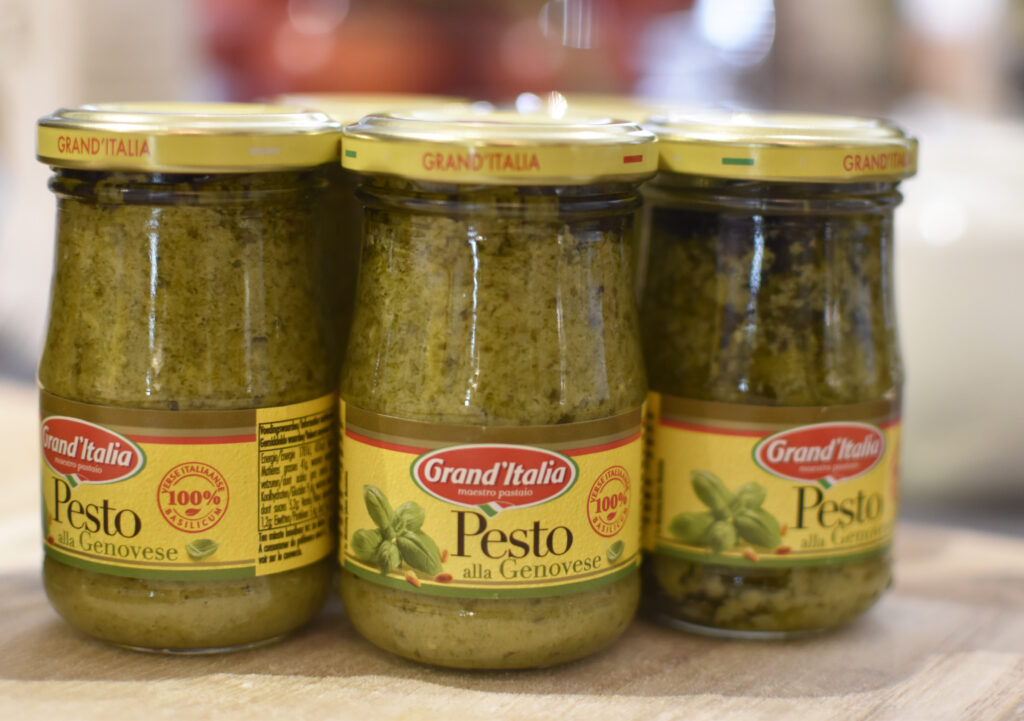
If you’re buying pesto in the supermarket, there are a few things you can keep into account if you want to get the best pesto out there.
First of all you can look at the structure of the pesto. You want the store-bought pesto to resemble home-made pesto. So don’t go for pesto that looks supersmooth and creamy, you want to have a bit of texture.
Make sure that the pesto is made with pine nuts. It can also include other nuts, because only using pine nuts would make the pesto very expensive. But it’s nice for the taste if there’s at least a small percentage of pine nuts in it.
Check if the pesto is made with Parmigiano-Reggiano or Grana Padano cheese and Pecorino Romano. These are the Italian cheeses that officially belong in pesto.
And last but not least, check if the pesto has the ISCC PLUS mark. The ISCC PLUS is a certification that shows that the company works as sustainable as possible. This means that all the used techniques have to respect and protect the biodiversity and the carbon stock.
My favorite supermarket pesto in the Netherlands is Grand’Italia Pesto alla Genovese, because they check all the boxes mentioned above.
Recipes with Pesto
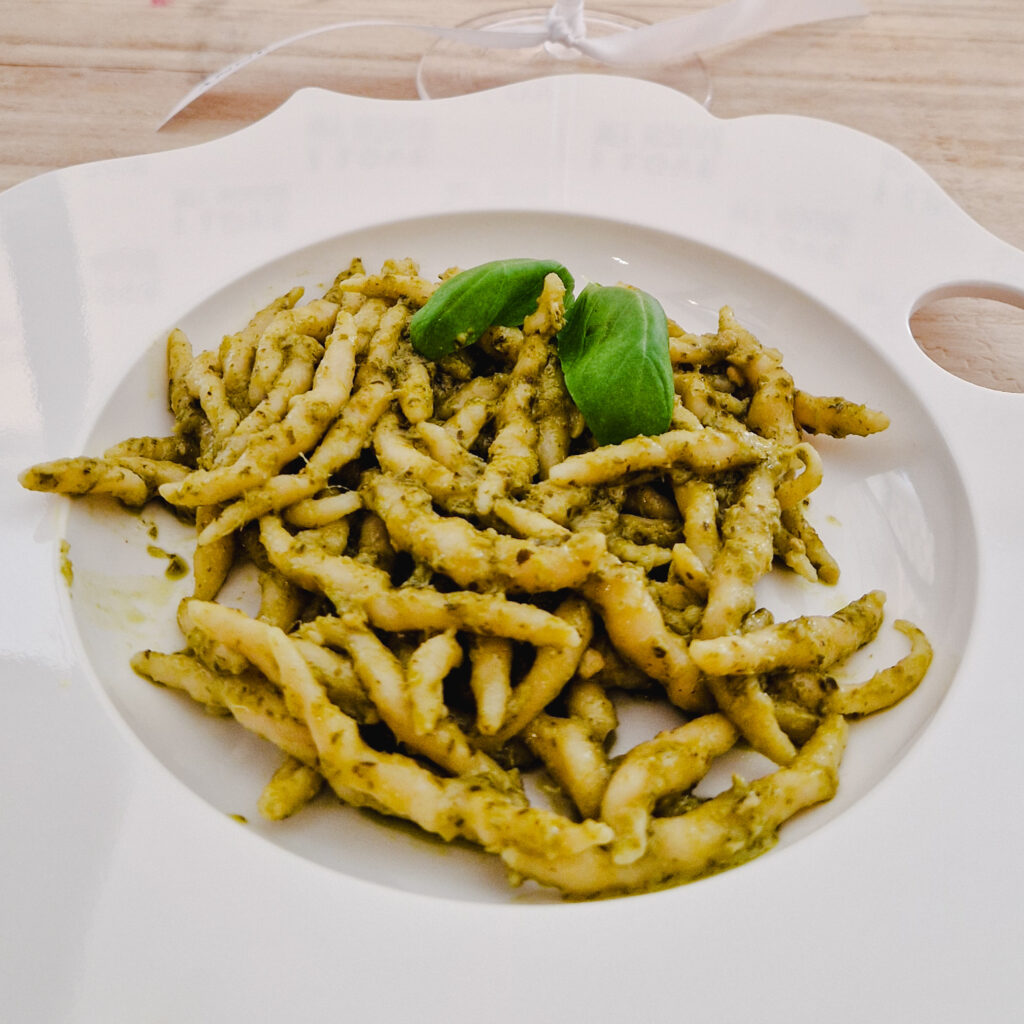
Below I’m sharing a recipe to make your own pesto. But first I’m sharing some inspiration for how you can use pesto in your dishes.
The versatility of green pesto is remarkable – it can be used in so many different ways. Here are a few ideas to get you started:
Pasta Pesto: Toss freshly cooked pasta with a generous amount of pesto, sprinkle with some extra cheese, and you have a simple yet satisfying meal in minutes.
Baked Pasta with broccoli and feta: after cooking the pasta and the broccoli, you finish this dish in the oven for a crunchy cheese layer
Bruschetta: Spread pesto on a slice of toasted bread and top it with fresh tomatoes, mozzarella, or grilled vegetables for a delightful appetizer or light lunch.
Pesto Cheese snacks: these Easy Pesto Cheese snacks will be the most favorite bite at your party.
Sandwiches: Add a dollop of pesto to sandwiches, paninis, or wraps to infuse them with a burst of flavor.
Salad Dressing: Combine pesto with vinegar, lemon juice, or yogurt to create a tangy and creamy salad dressing.
Roasted Vegetables: Toss roasted vegetables like potatoes, zucchini, or carrots with pesto for an easy and flavorsome side dish.
Vegan Pesto Buns: if you make your own pesto, you can make it vegan (or buy a vegan pesto in the store) for these savory buns.
Recipe to make your own pesto
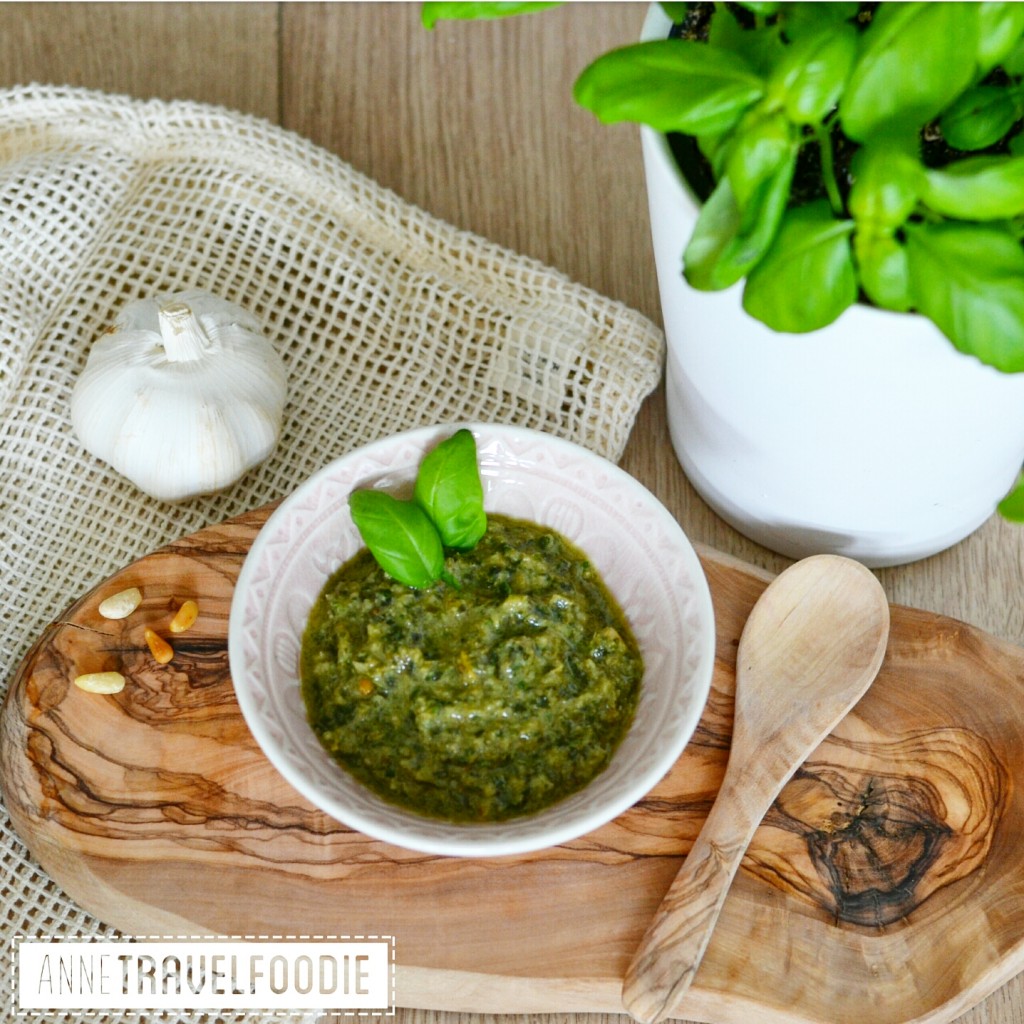
Making your own pesto at home is relatively easy and can be a satisfying culinary adventure. Here is a simple recipe for homemade green pesto:
Ingredients:
2 cups fresh basil leaves
1/2 cup pine nuts (chopped almonds, cashews or walnuts can be substituted)
2-3 garlic cloves
1/2 cup grated Parmigiano-Reggiano cheese
1/4 cup grated Pecorino cheese
1/2 cup extra virgin olive oil
Salt and pepper to taste
Instructions:
In a food processor or blender, combine basil leaves, pine nuts, and garlic cloves. Process until finely chopped.
Add the grated cheeses and pulse until well combined.
Gradually pour in the olive oil while blending until the mixture reaches your desired consistency.
Season with salt and pepper, adjusting to taste.
Pesto lovers unite!
Now you know everything about Pesto. Pesto’s versatility knows no bounds, and it can enhance the flavors of countless dishes. So, whether you prefer green pesto with its delightful basil aroma or the intense tanginess of red pesto, there’s no denying that pesto is an indispensable sauce in any kitchen. So, grab your mortar and pestle or whip out the food processor, and start creating your own pesto masterpieces today!
Click here to read everything you need to know about Balsamic vinegar

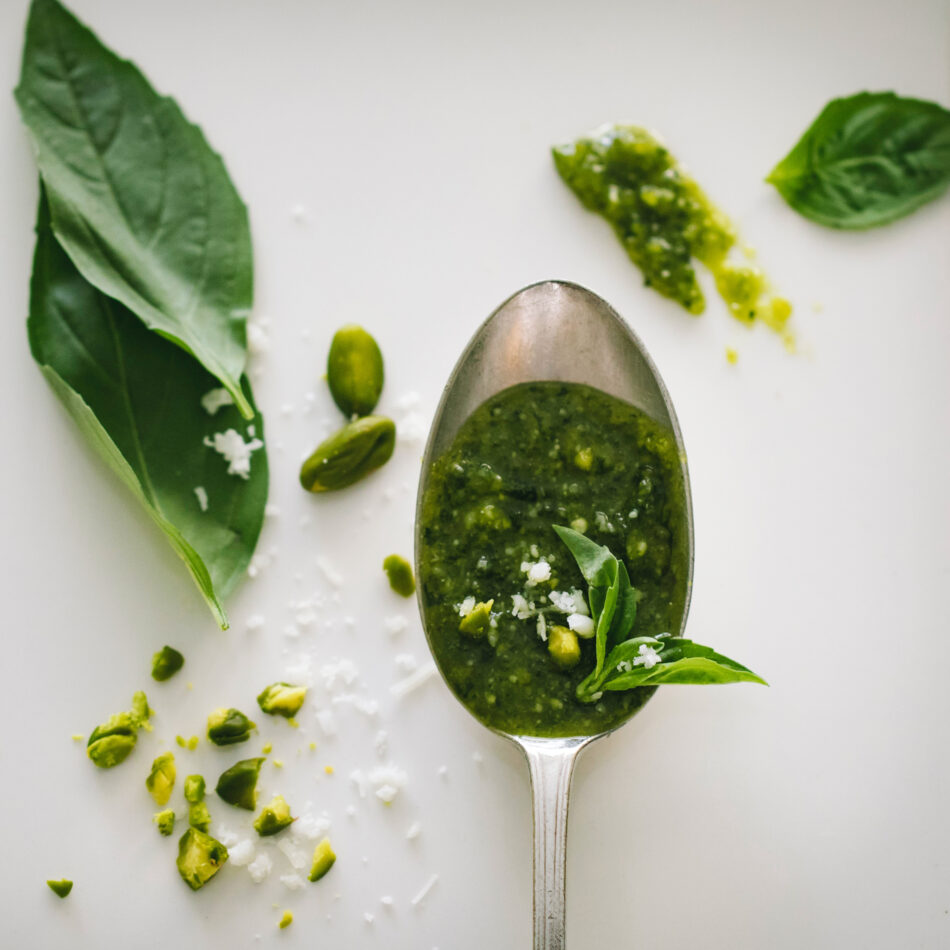

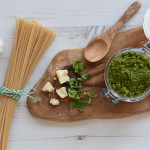








Pingback: Op de basilicumvelden van Grand’Italia - Anne Travel Foodie
Pingback: The best Instagram spots in Parma, Italy - Anne Travel Foodie
Pingback: One of the best Instagram spots in Parma, Italy - Praiala